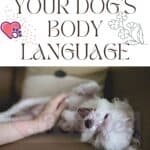
Do you think all petting is good for any dog? This is not exactly the case.
The complex behavior of dogs, as well as their body postures and facial expressions, can sometimes be opposite to that of humans. This phenomenon can lead to situations in which both individuals, the dog and the human being, misinterpret each other’s intentions.
Furthermore, just as there are people with remarkable social skills, who love to physically interact with other human beings, there are people who are not.
The same thing happens with dogs. Not all dogs appreciate physical contact, especially if it comes from unknown humans or who do not belong to their family group and with whom they do not share a positive bond.
Should dogs be petted?
Understanding a dog’s behavioral responses is a key factor in establishing a physical interaction with the animal.
People, whether or not they have established a family relationship with a dog, tend to initiate their communication by resorting to physical contact. Nonetheless, dogs tend to reserve this type of interaction for members who already belong to their social group.
On the other hand, we don’t usually think about the emotional state in which the dog we wish to pet is. We do not know if the animal has any problems with resource management, self – control, attachment, etc.
As a general rule, we should never touch a dog we do not know or who exhibits fear or distrust. In order to do this, it is first necessary to know the behavior and attitudes of dogs. Each animal is unique and, as a result, we cannot generalize.
In fact, many dogs prefer food instead of petting as a treat. Furthermore, our mood can affect the dog, increasing some negative emotions such as stress or anxiety.
Does my dog enjoy being petted?
There are some signs that we can easily identify, to know if our dog appreciates petting or not, as long as it is a balanced animal and does not present emotional problems.
When we gently touch our four-legged friend, we will see in them a calm and relaxed attitude. The reason is due to the decrease in cortisol levels (the stress hormone) and the reduction in heart rhythm.
Nevertheless, we must take into account which part of their body we touch. Generally, the chin area, chest and base of the tail are areas of the body where all dogs agree to be stroked. On the contrary, the legs, the top of the head, the neck, the shoulders and the tail tend to provoke a negative physiological response in the animal.
However, all of this is not valid for all dogs. It is necessary to evaluate the link between the person and the animal. There are dogs who love to be kissed and hugged by their owner, manifesting a reciprocal response in which the animal tries to lick and maintain physical contact with their favorite human being.
If, on the other hand, it manifests some of the behaviors we discuss in the following lines, it is a signal that suggests that we need to strengthen our bond with the dog.
Signs of calm in dog behavior

Among the behaviors of dogs, there is a set of attitudes called “signs of calm”. Dogs resort to them to try to calm both themselves and the other individual, with whom the conflict has arisen. The most frequent signs of calm are:
- Yawn
- Lick your face
- Look the other way
- Wiggle the tail
- Licking with excitement
- Half closed eyes
- Smell the ground right where the animal is
- Walk in circles
- Show belly
All of these behaviors can occur at any time, without some negative trigger being present. We will therefore have to analyze the situation, to understand if it is positive or negative for the dog.
For example, if we pet the dog and the dog then licks itself or avoids looking at us with narrowed eyes, it is very likely that it is not appreciating our caresses.






